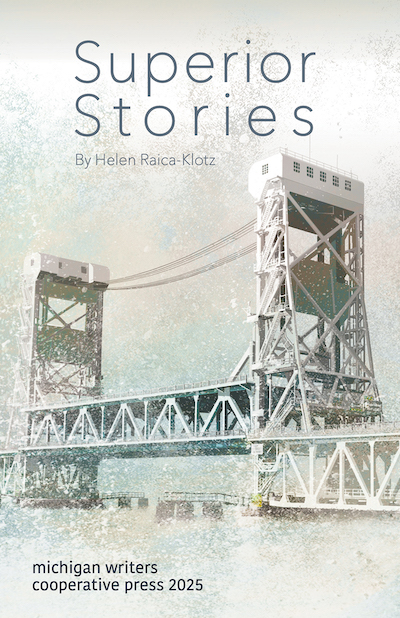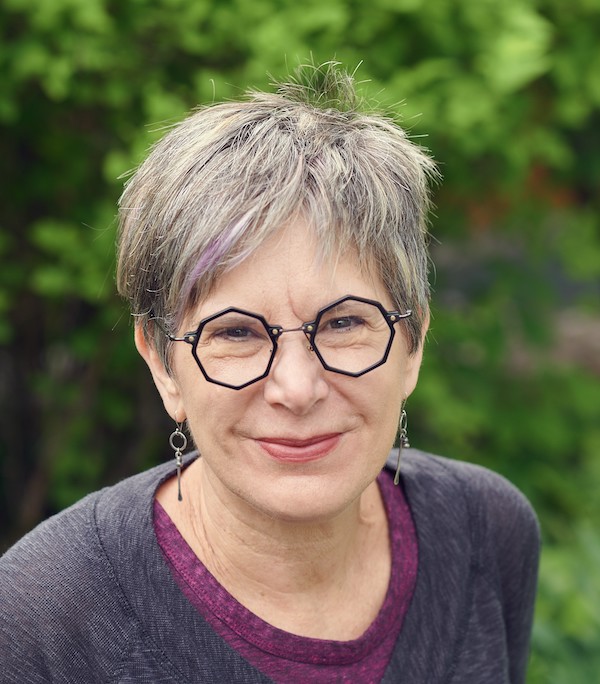by John Mauk
Writing contests are ubiquitous. Nearly every major literary outlet hosts at least one contest per year. While some might argue against the competitive element—a force that pits writers against one another—literary culture has, no doubt, embraced the mighty contest. Editors across institutions and genres see its value. If anything, formal competition raises the stakes for individual writers and raises awareness of all players involved: entries, judges, editors, winners, and runners-up.
The chapbook contest is a unique subset. In fact, national contests have propped up the chapbook genre—what it is, what it does. For seasoned and emerging writers alike, chapbooks offer an opportunity to try something, to test the waters of an idea, or even enter a new headspace. Chapbooks, after all, aren’t novels, not an entire body of work. Instead, they’re public experiments in form, voice, subject matter, or aesthetic possibility. Writers need them. Most importantly, we need to see others’ experiments—others’ risky efforts. In this sense, chapbook contests are a crucial force in literary culture. They’re an aesthetic third space, both public laboratory and formal pedestal. They spotlight what’s possible for new and well-established writers.
The Michigan Writers Cooperative Press Chapbook Contest has definitely made its mark. Running for twenty-seven years, the MWCP contest has published thirty-eight chapbooks of fiction, poetry, and creative nonfiction. It has featured twenty-one outside judges from across the US and from a wide range of traditions. Widely acclaimed poets, memoirists, novelists, and short story writers have offered their esteem and praise. This year Wendy Gilbert Gronbeck won in creative nonfiction; Jen Wiezorek won in poetry; and with her intimate stories about Michigan’s Upper Peninsula, Helen Raica-Klotz won the fiction category. According to final judge Bryan Gruley, “Raica-Klotz conjures evocative settings and richly layered up-north characters with language that is at once concrete and elegiac, painting a hard yet enchanting landscape of tarpaper roofs, black ice, and hoar frost-a travelogue of human hope and grief, aspiration and desperation.”
In this interview, Raica-Klotz shares her experience at crafting her award-winning stories—and moving from academic to fiction writing. As a seasoned academic and emerging literary writer, she sheds interesting light on making the leap from one world to another.
John Mauk: Let’s start with Michigan’s Upper Peninsula, where these stories take place. What’s your experience with that strangely powerful region? More importantly, how did you go about bringing that experience into storytelling?
Helen Raica-Klotz: I was born and raised in the Upper Peninsula (U.P.) of Michigan. Until I was five, I lived in Munising, in the heart of the U.P., surrounded by grandparents, aunts, uncles, and countless cousins. Then my mother remarried and took a teaching job in the Keweenaw, in the northernmost tip of Michigan. I remember thinking that I was in trouble: what kind of family was made up of just three people? Who was going to take care of me? But it all worked out.
Since I was a pretty solitary kid, I would spend my time reading on the floor by the wood stove in the kitchen or playing in the cedar trees and snowdrifts that filled our backyard. My mother would take me blueberry and strawberry picking, and my dad tried (unsuccessfully) to teach me to swim, ice skate, and fish. Most of the time, however, I would lose hours looking out the window of my bedroom at the small row of copper miners’ houses bordering the black sands of Torch Lake across the street, imagining other worlds different from this small U.P. town. But, ironically, the Keweenaw is a place that recurs in my creative work. I suspect a region that you live in for a long time resides inside of you; it becomes a part of your internal landscape. So writing about this region was not difficult.
The stories here all begin with brief passages of exposition. They’re not narrative but something else—a form of reportage that contextualizes the characters and their struggles. Can you explain how you came to this strategy and any concerns you weighed?
I was at the Interlochen Writers Retreat last summer, and I heard Christine Maul Rice read an excerpt from the opening of her upcoming novel, Sick Water, a reimagining of the Flint water crisis. She used a smart omniscient POV that was able to set the scene of that city and its history in a few short pages. I was impressed. The next day, I asked my workshop instructor, Patricia Ann McNair, if I could do something like that in a short story. She said, “Of course. You can do anything, as long as it works.” I decided to give it a try.
At the time, I did not consider myself a fiction writer; my past work has focused on non-fiction. But opening each story as “reportage,” with non-fictional descriptions of locations and weather specific to the Keweenaw, allowed an entry into the fictional stories that felt more organic to me. I did get some feedback that these descriptions would be more effective integrated into the stories or quilted into each story in segments. I tried this, but I couldn’t pull it off. So I kept it as I originally drafted it: with an opening section in a different and distinct voice than the narrative that followed. And, of course, after the stories were written, I went back (and back again) to make sure that the opening sections also served as metaphors for the story itself.
So it worked. I know this is a tricky question but what did that recurring work (going back and back again) involve? What kinds of changes were warranted? And did the opening segment ever impact the story?
I spent most of my time making the opening non-fiction sections connect to the narratives that followed. I made a list of words (nouns and verbs) that occurred in each opening and tried to weave those words into the story itself. For the stories that focused on a location, this was easy: the location was the external setting. The stories that focused on the weather were more challenging. In the U.P., weather is a powerful force. In this collection, I wanted the weather to not only be a metaphor for the story, but to mirror the mood or temperament of the main character. And yes, the opening segments did shape the collection: two days before the chapbook was due, I pulled out a story (one that I thought was well-crafted), and I replaced it with another, simply because that first story did not fit the opening I had written. Luckily, I was able to revise that story a bit in the editing process before it went to print.
The stories are connected. Some characters cross the story boundaries and end up in others’ narrative space. What can you tell writers who might be considering interconnected stories? What are the ups and downs, the pleasures and pitfalls?

In the small towns of the U.P., everyone is connected. At least, it seems that way. I am still introduced when I go to Munising as “Aunt Rochelle’s oldest niece,” or “Tommy Daniels’ second cousin.” When I visit the Keweenaw, I’m introduced as “Judy Raica, you know, the old Dollar Bay High principal? Her daughter,” and “Helen, who graduated with Billy Panian and David Jokinen.” You are placed in a relational geography, a time and space. Because of this, it made sense to me that some of the characters would recur in the various stories. These towns, after all, are small spaces. I thought if you have a story based in a place like the rural U.P., these intersections might just work.
It was challenging. I had to be careful that these recurring characters didn’t take over the main characters’ stories; I couldn’t complicate the characters’ lives too much after their story was finished. But it was fun too. These minor characters recurring in other characters’ narratives is one way to poke at the reader (“Are you paying attention?”). If the reader sees the connections, that’s great. If they don’t, that’s okay too: these connections are not necessary for the stories to unfold.
Finally, like many writers, you come from the land of academia. You’ve worked in English departments for years. What skills or writerly impulses did you retain in the leap to literary fiction? What skills or impulses did you abandon—or even come to see as impediments?
Oh yes. I consider myself a recovering academic. I lucked into a full-time teaching gig at Saginaw Valley State University (SVSU), a regional college in the middle of lower Michigan, almost 30 years ago. I still teach there, part-time. I have taught literature and composition courses, ran the university writing center, started a few community writing centers, and coordinated various projects aimed at helping people write. I’ve been fortunate to teach in a homeless shelter, a regional correctional facility, and a juvenile detention center. All of this has been good work.
I have become a good teacher; now I am trying to become a good creative writer. I have taken a series of classes, workshops, and attended various writing retreats. I cajole, beg, and barter with good writers to give me feedback. I read books on craft and fiction/non-fiction that do what I hope to do. What have I discovered? What I have been saying to my students about the importance of revision (re-seeing) your work is more important than I had realized. I joke that while Superior Stories is only 48 pages long, it’s probably about 350 pages of revisions.
My past writing has been almost exclusively transactional. I’ve written lots of grants (and still do) for projects I care about, and I’ve written academic papers to share ideas and research about composition with a few folks that pay attention to that kind of stuff. It’s writing with a clear purpose and audience. It’s important work, and it is its own genre: the correct references, the right discourse, and the carefully constructed arguments to support a clear thesis.
Creative writing seems very different to me. First, particularly in fiction writing, there isn’t a clear purpose or audience, and the guidelines are fluid—at least at first. This is both wonderful and terrifying. Second, creative writing is about honesty—at least for the writer. Even if it’s fiction, the author must be true to the story that wants to be told, even if the story is bare, gritty, or down-right unattractive. That’s probably why my colleagues at the university treat student narratives like the drunken uncle at the family reunion who tells off-color jokes and drinks too much Pabst beer: something you tolerate, but don’t encourage. And now, I write these kinds of narratives too.
Yes, the drunk uncles (and aunts?) are necessary. They make family gatherings messy. They make unexpected, sometimes impolite, points. They remind us of things best forgotten. How has adopting that role—at least in your writerly efforts—changed your thinking about academic work, professional life, or even teaching?
I admit, before I started writing creatively, I didn’t like to teach the personal narrative in my composition courses. I am, by nature, an introvert. I would rather read the stories of people I don’t know than the students sitting in front of me for fifteen weeks. After all, it wasn’t my interest in human nature, but my innate fear of human interaction that prompted me to become an English teacher rather than a therapist. I am usually more comfortable talking about a student’s underdeveloped paragraph or missing commas than about the truth they are attempting to tell.
But I’ve changed my mind. Through my own work as a writer, I’ve come to realize that the personal narrative has power, one that stretches beyond the academy. Through storytelling, we can reframe, refocus, reevaluate our experiences as human beings in this world. After all, the Latin root of “educate” is educere, which means to lead out. As an educator in the university, I have the opportunity to lead students back into their past lives, to examine and honor that place, and perhaps even begin to consider ways to move past well-worn truths that no longer serve them well—and all of this can begin through the writing of their own story. Now, that’s pretty cool stuff.
Helen Raica-Klotz teaches composition and literature courses at Saginaw Valley State University. She’s also taught writing at a regional prison, a homeless shelter, an alternative high school, and other places where she can find people with stories to tell. Helen is author of Superior Stories, winner of the 2025 Michigan Writers Cooperative Press fiction chapbook contest. Her creative work has appeared in The MacGuffin, Porcupine Literary, Awakenings, Dunes Review, Muleskinner Journal, and Great Lakes Review.
John Mauk hosts Prose from the Underground, a free video series featuring writers of fiction and nonfiction. His first story collection, Field Notes for the Earthbound, was published by Black Lawrence Press. His second collection, Where All Things Flatten was published in 2024. For more information, see johnmauk.com.


